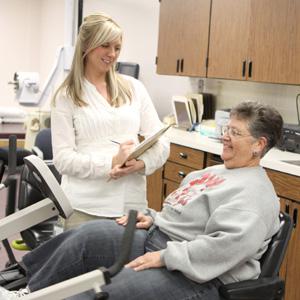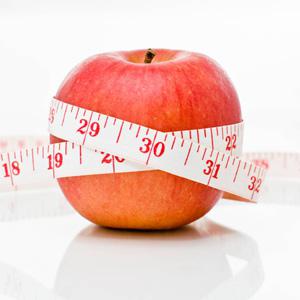
When compared to an apple, a banana has four times the protein, twice the carbohydrate, three times the phosphorus, five times the vitamin A and iron, and twice the other vitamins and minerals. It is also rich in potassium and is one of the best value foods around. No wonder monkeys are so happy all the time.
An average banana contains about 90 energy calories, 23 g of carbohydrates, 12 g of sugar, 2.6 g of dietary fiber, 1 g of fat, and 9 mg of vitamin C.
Energy Boost: Bananas contain three natural sugars - sucrose, fructose and glucose combined with fiber. A banana gives an instant, sustained and substantial boost of energy. Research has proven that just two bananas provide enough energy for a strenuous 90-minute workout. No wonder the banana is the number one fruit with the world's leading athletes. But energy isn't the only way a banana can help us keep fit. It can also help overcome or prevent a substantial number of illnesses and conditions, making it a must to add to our daily diet.
Nerves: Bananas are high in B vitamins that help calm the nervous system.
Glucose Level: Lowering the glucose value in the blood is one of the healing effects of the banana. Eating one or two pieces of banana will regain your stamina and recover from fatigue rapidly after finishing your daily hard work.
Anemia: High in iron, bananas can stimulate the production of hemoglobin in the blood and so helps in cases of anemia.
Depression: According to a recent survey undertaken by mind amongst people suffering from depression, many felt much better after eating a banana. This is because bananas contain tryptophan, a type of protein that the body converts into serotonin, known to make you relax, improve your mood and generally make you feel happier.
Blood Pressure: This unique tropical fruit is extremely high in potassium yet low in salt, making it perfect to beat blood pressure. So much so, the US Food and Drug Administration has just allowed the banana industry to make official claims for the fruit's ability to reduce the risk of blood pressure and stroke.
Morning Sickness: Snacking on bananas between meals helps to keep blood sugar levels up and avoid morning sickness.
Mosquito bites: Before reaching for the insect bite cream, try rubbing the affected area with the inside of a banana skin. Many people find it amazingly successful at reducing swelling and irritation.
Brain Power: Students were helped through their exams this year by eating bananas at breakfast, break, and lunch in a bid to boost their brain power. Research has shown that the potassium packed fruit can assist learning by making pupils more alert.
Constipation: High in fiber, including bananas in the diet can help restore normal bowel action, helping to overcome the problem without resorting to laxatives.
Ulcers: The banana is used as the dietary food against intestinal disorders because of its soft texture and smoothness. It is the only raw fruit that can be eaten without distress in over-chronicler cases. It also neutralizes over-acidity and reduces irritation by coating the lining of the stomach.
Temperature control: Many other cultures see bananas as a cooling fruit that can lower both the physical and emotional temperature of expectant mothers. In Thailand, for example, pregnant women eat bananas to ensure their baby is born with a cool temperature.
Seasonal Affective Disorder (SAD): Bananas can help SAD sufferers because they contain the natural mood enhancer tryptophan.
Quit Smoking: Bananas can also help people trying to give up smoking. The B6, B12 they contain, as well as the potassium and magnesium found in them, help the body recover from the effects of nicotine withdrawal.
Stress: Potassium is a vital mineral, which helps normalize the heartbeat, sends oxygen to the brain and regulates your body's water balance. When we are stressed, our metabolic rate rises, thereby reducing our potassium levels. These can be rebalanced with the help of a high-potassium banana snack.
Strokes: According to research in The New England Journal of Medicine, eating bananas as part of a regular diet can cut the risk of death by strokes by as much as 40%!
Heartburn: Bananas have a natural antacid effect in the body, so if you suffer from heartburn, try eating a banana for soothing relief.
Reference: HealthOnclick

Katelyn Ligons recently joined the staff of the Therapy Department at Missouri Southern Healthcare. Katelyn is a Physical Therapy Assistant.
As a physical therapy assistant (PTA), Katelyn is educated in the administration of therapeutic exercise, massage, stretching, as well as balance and gait training in the rehabilitation setting. PTAs job duties also include the evaluation and documentation of patient progression or regression. Physical therapy assistants can also perform assistive device training with crutches, canes, and walkers. Katelyn works with both inpatients and outpatients.
Prior to joining the MSH Team, Katelyn worked for RehabCare in Poplar Bluff and Doniphan.
Katelyn graduated from Poplar Bluff High School in 2005 and went on to receive her AAS degree from Tidewater College. She then pursued her Physical Therapy Assistant degree from Arkansas State University.
In her spare time, Katelyn enjoys reading, baking and spending time with her husband, Josh, family and friends.

When it comes to weight loss, there's no lack of fad diets promising fast results. But such diets limit your nutritional intake, can be unhealthy, and tend to fail in the long run.
The key to achieving and maintaining a healthy weight isn't about short-term dietary changes. It's about a lifestyle that includes healthy eating, regular physical activity, and balancing the number of calories you consume with the number of calories your body uses.
Staying in control of your weight contributes to good health now and as you age.
If you've been thinking about your current weight, it may be because you've noticed a change in how your clothes fit. Or maybe you've been told by a health care professional that you have high blood pressure or high cholesterol and that excessive weight could be a contributing factor. The first step is to assess whether or not your current weight is healthy.
How can I tell if I'm at a healthy weight? Adult Body Mass Index or BMI
One way to begin to determine whether your weight is a healthy one is to calculate your "body mass index" (BMI). For most people, BMI is a reliable indicator of body fatness. It is calculated based on your height and weight.
To calculate your BMI, see the BMI CalculatorBMI Calculator. Or determine your BMI by finding your height and weight in this BMI Index Chart.
If your BMI is less than 18.5, it falls within the "underweight" range.
If your BMI is 18.5 to 24.9, it falls within the "normal" or Healthy Weight range.
If your BMI is 25.0 to 29.9, it falls within the "overweight" range.
If your BMI is 30.0 or higher, it falls within the "obese" range.
"Underweight", "normal", "overweight", and "obese" are all labels for ranges of weight. Obese and overweight describe ranges of weight that are greater than what is considered healthy for a given height, while underweight describes a weight that is lower than what is considered healthy. If your BMI falls outside of the "normal" or Healthy Weight range, you may want to talk to your doctor or health care provider about how you might achieve a healthier body weight. Obesity and overweight have been shown to increase the likelihood of certain diseases and other health problems.
At an individual level, BMI can be used as a screening tool but is not diagnostic of the body fatness or health of an individual. A trained healthcare provider should perform appropriate health assessments in order to evaluate an individual's health status and risks.
To calculate your BMI, use the tool below.

Missouri Southern Healthcare is proud to announce that Reza Jalal, M.D. has received the CMD designation by the Board of Directors of the American Medical Directors Certification Program (AMDCP). Dr. Jalal is now a Certified Medical Director in Long Term Care (CMD).
The AMDA Certified Medical Director (CMD) in Long Term Care Program was developed by AMDA in 1991, after three years of research and development using surveys, consensus conferences, and experts to define the core skills and knowledge necessary for effective medical direction. Receiving the Certified Medical Director in Long Term Care recognizes expertise in dual clinical and managerial roles of the medical director. Certification requires competence in clinical medicine and medical management in long term care. The certification process is based on a model that includes board certification, continuing medical education, CMD-approved and AMDA-sponsored courses in medical direction, and other continuing education programs to fulfill certification requirements.
Dr. Jalal is Board certified in Internal Medicine, Hospice and Palliative medicine and serves as the Medical Director for many of the areas long term care facilities. He also cares for his patients at his office at Dexter Internal Medicine Group and at Missouri Southern Healthcare. “It is about preparing oneself to best care for the frail elderly in long term care facilities” said Jalal. “CMD certification process has prepared me to care for such residents in our area. It is an honor to be amongst some of the best and caring geriatricians in our country. I want to thank my family for all their sacrifices in helping me achieve this goal and also thank all the staff in the area long term care facilities and MSH in supporting me through this effort.”

The group offers the following tips to help your family get moving and stay fit throughout the year:
-
Take a walk. Stroll together after a family meal or walk around the mall when it's cold or raining.
-
Choose an outing. Spend a weekend afternoon going to a pool, skating rink or basketball court.
-
Take breaks. Try to fit in 10 to 15 minutes of rigorous physical activity several times a day.
-
Team up. Have the family sign up for a group run, walk or car wash.
-
Limit TV. Select which shows kids will watch ahead of time and limit screen time to just those programs.
-
Join a gym. Buy a family membership to a local fitness center, YMCA or health club.
-
Learn something new. Have family members take a lesson in an activity, such as martial arts, fencing or gymnastics.
-
Chores count. Working together around the house or in the yard is another way families can stay active.
The alliance added that parents should be role models for their children. That means they should strive to make healthier changes in their own lives as well as their children's routines.
http://dailyhealthcentral.com/ViewArticle.aspx?a=1997

